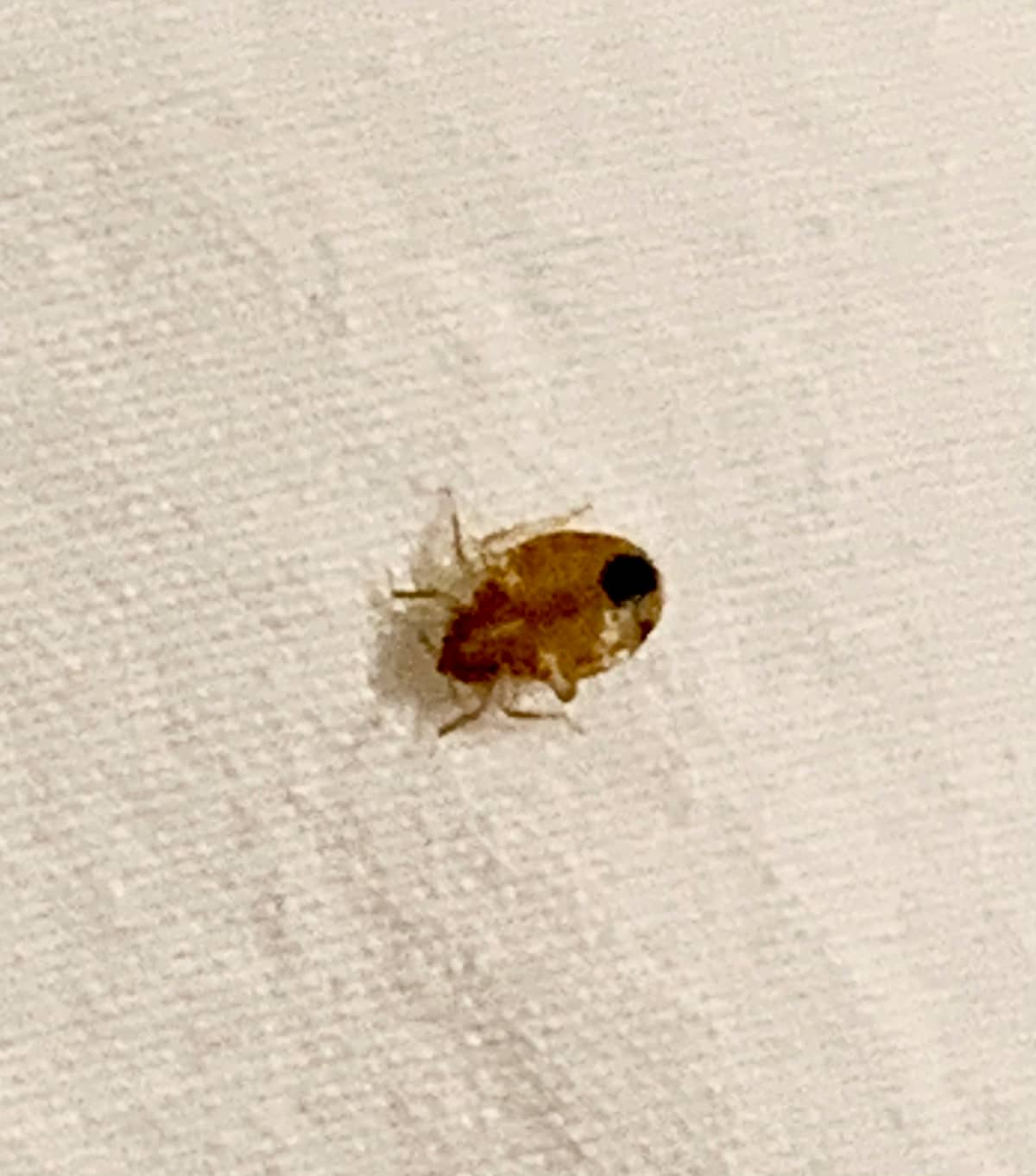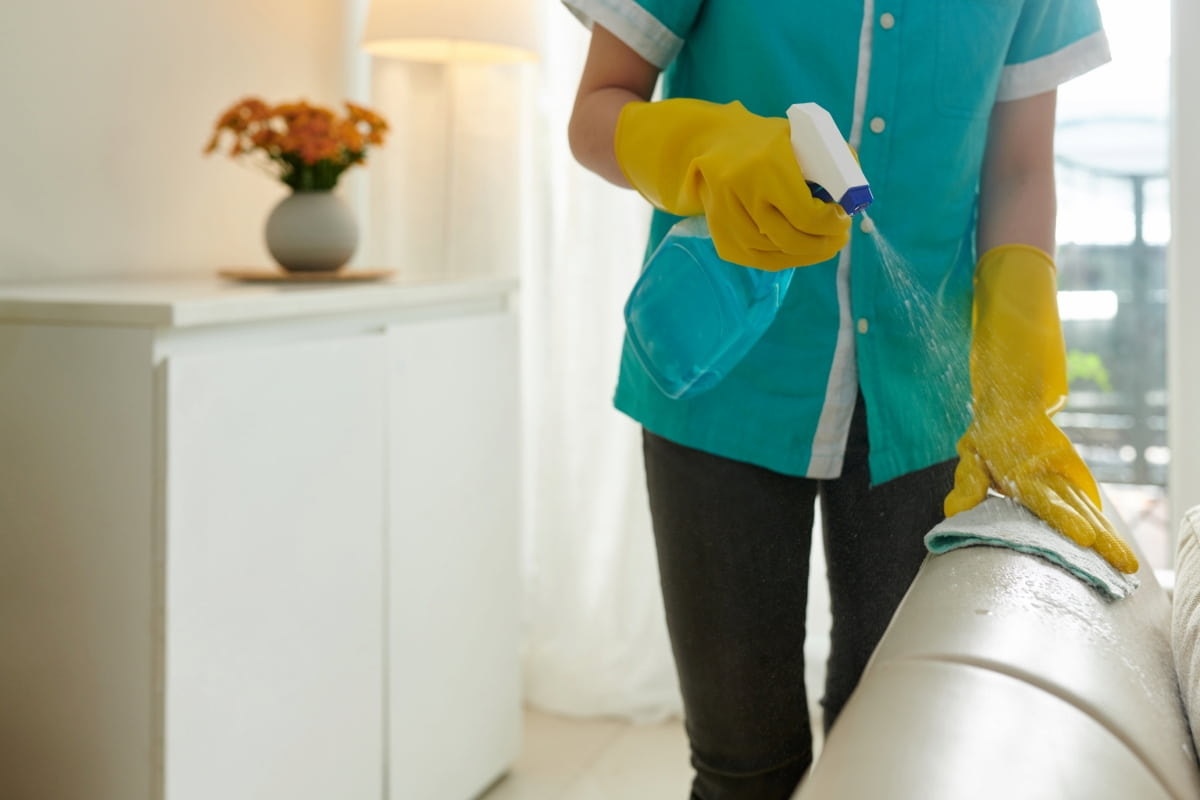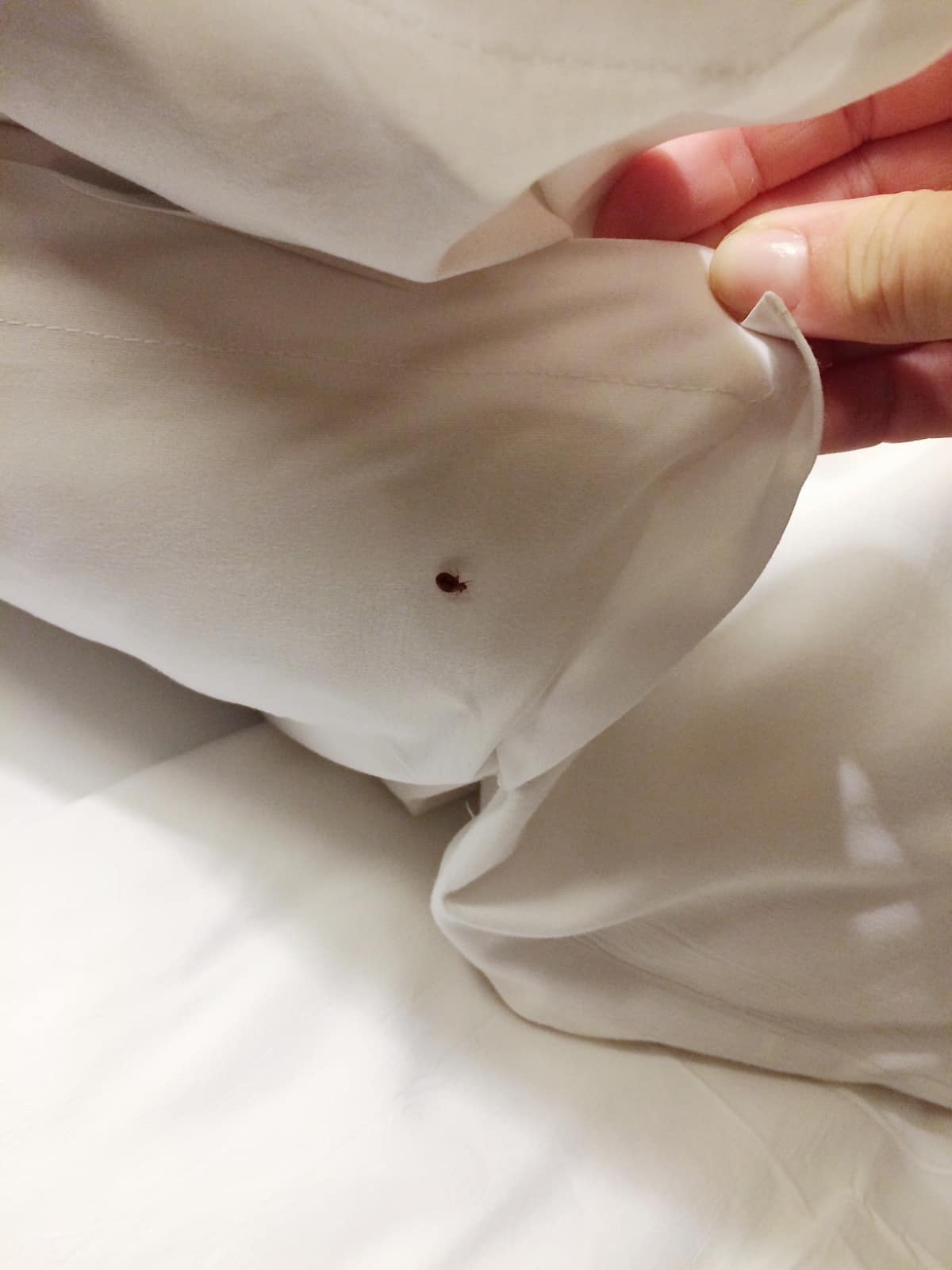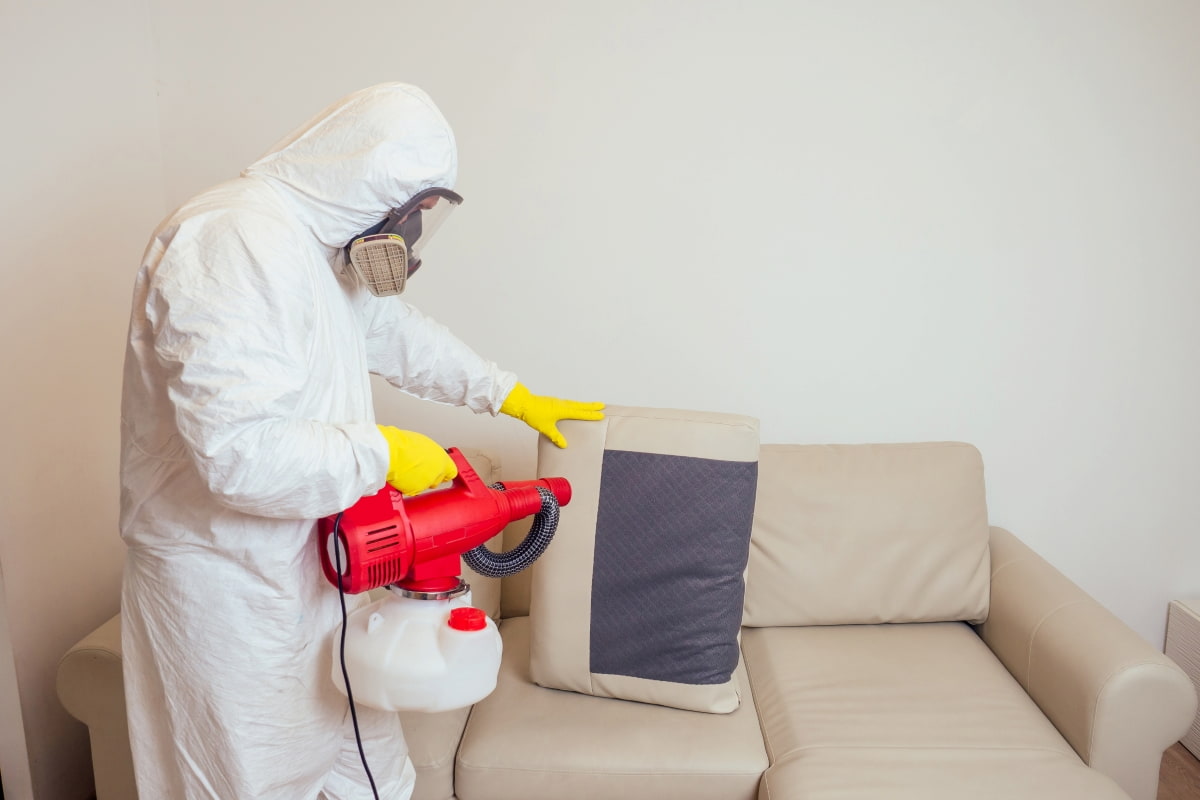Getting rid of bed bugs promotes better overall hygiene in your home. These pests are known to carry bacteria and allergens that can pose health problems to you and your family members. By taking proactive measures to control them, you’re creating a healthier living environment. So, there are many effective home remedies and natural ways to prevent bed bugs from your couch, pillows, and mattress.

How to Get Rid of Bed Bugs from Couch
Signs of Bed Bugs on the Couch, Pillows, and Mattress
The most common places they hide are in your couches, pillows, and mattresses. Firstly, keep an eye out for small reddish-brown stains on your sheets or pillowcases. These could be bed bug droppings or blood stains from their feeding frenzy during the night. You might also notice tiny dark spots on your mattress or couch cushions – these are bed bug excrement.
Another sign is finding discarded bed bug skins around your furniture. As these pests grow and molt, they shed their skin multiple times, leaving behind evidence of their presence. Vacuuming regularly can help remove any visible signs of bed bugs and their eggs from the surface of your couches, pillows, and mattresses. Additionally, consider using a stiff brush to scrub along seams and crevices where they may be hiding. Be thorough but gentle so as not to damage delicate fabrics.
Cleaning and Vacuuming Steps to Remove Bed Bugs from Couch, Pillows, and Mattress
These steps not only help eliminate the existing bed bugs but also prevent further infestations. Start by thoroughly vacuuming all surfaces of your couch, including the cushions, seams, cracks, and crevices. Make sure to dispose of the vacuum bag or empty the canister outside immediately after vacuuming.
Next up are your pillows. Please place them in a dryer on high heat for at least 30 minutes. The heat will kill any bed bugs present on the pillow covers or inside the filling. As for your mattress, begin by removing all bedding and washing it in hot water, followed by drying it on high heat settings. This will effectively kill any remaining bed bugs on the fabric. Then, use a stiff brush to scrub along the seams of the mattress to dislodge any stubborn pests before vacuuming again.
Laundering and Heat Treatment for Pillows Infested with Bed Bugs
Start by removing the pillowcase and placing it in a sealed plastic bag for laundering. Use hot water (at least 54°C) and a high-temperature drying cycle to kill any bed bugs or eggs on the fabric. Next, treat the pillow itself with heat. Please place it in a dryer on high heat for at least 30 minutes, ensuring that all areas reach temperatures above 48°C to eliminate any remaining bed bugs.
If your pillow cannot be laundered or exposed to heat, consider freezing it instead. Seal the pillow in a plastic bag and place it in the freezer for at least four days. This cold temperature will also kill any bed bugs present. Regularly inspect your pillows for signs of bed bug activity and wash them regularly to prevent infestations from occurring or spreading further throughout your home.
Use Encasements for Mattresses to Eliminate Bed Bugs
These designed covers are made of a durable material that prevents bed bugs from entering the mattress. When choosing an encasement, make sure it is specifically designed for bed bug protection and labeled as such. The cover should be snugly fitted around the entire mattress, with no gaps or openings where bed bugs could enter or escape.
In case you missed it: How to Use Neem Oil to Control Bed Bugs: A Natural Way to Get Rid of Bed Bugs from Home

It’s important to note that encasements alone may not completely eradicate a severe infestation; they work best when used in conjunction with other methods like cleaning and vacuuming. However, they do provide an extra layer of protection and can help in reducing the number of live bed bugs in your home. If you notice any signs of an infestation despite using encasements, it’s essential to take further steps to treat the problem promptly.
Steam Cleaning as a Method to Get Rid of Bed Bugs from Couch, Pillows, and Mattress
To begin the process, you will need a steam cleaner with a nozzle attachment. Make sure to follow the manufacturer’s instructions for operating the machine. Start by vacuuming all surfaces of your couch, pillows, and mattress to remove any loose debris. Next, use the steam cleaner to treat every inch of these items thoroughly.
Remember not to saturate your furniture or bedding excessively with steam, as it may cause damage. Be cautious when using this process on delicate materials or antique furniture. After steaming is complete, allow sufficient time for everything to dry completely before using them again. This will help to maintain hygiene.
Natural Remedies for Bed Bug Removal from Couch, Pillows, and Mattress
One popular natural remedy is using diatomaceous earth. Sprinkle diatomaceous earth on affected areas and leave it for a few days before vacuuming it up. Another effective remedy is lavender oil. Mix lavender oil with water in a bottle and apply it directly onto infested areas.
Additionally, steam treatment can be highly beneficial in eliminating bed bugs from couches, pillows, and mattresses naturally. The high temperatures produced by steam can effectively kill both adult insects as well as their eggs hiding deep within fabric fibers. Consider using essential oils around your sleeping area to repel any future invaders.
Use Glue Traps for Killing Bed Bugs
These are designed to catch and trap bed bugs, preventing them from spreading further in your home. The sticky adhesive on the trap attracts the pests, making it an easy way to monitor and control their population. To use glue traps effectively, start by placing them strategically near areas where you suspect bed bug activity. This includes around the legs of your couch, under pillows, and along the edges of your mattress. Make sure to follow the instructions provided with the traps for optimal placement.
In case you missed it: Does Lysol Kill Bed Bugs?: Myths and Facts About Lysol and Bed Bugs

Once set up, check the glue traps to see if any bed bugs have been caught. If you find insects stuck on the adhesive surface, carefully dispose of them in a sealed bag or container. Remember that even if you don’t capture every single bug with these traps alone, they can still be a valuable tool in reducing their numbers. It’s important to combine this method with other treatments and preventive measures for maximum effectiveness.
Disposal of Severely Infested Couches, Pillows, or Mattresses
Before disposing of any furniture or bedding, it’s important to take certain precautions. First and foremost, make sure to securely wrap the infested item in plastic before moving it out of your home. This will help contain any bed bugs and prevent them from spreading to other areas.
Once wrapped up tightly in plastic, label the item as “infested” so that others know not to pick it up. The next step is finding an appropriate way to dispose of the infested item. Many cities have specific guidelines for discarding large items such as couches or mattresses. Check with your local waste management department for instructions on properly disposing of these items.
Monitor and Follow-Up Inspections After Treating Bed Bugs on Couch, Pillows, and Mattress
Bed bug infestations can be persistent and may require multiple treatments before they are completely eradicated. Regularly inspect your couch, pillows, and mattress for any signs of bed bug activity. Pay attention to dark spots or stains on the fabric, as these could indicate bed bug droppings.
In case you missed it: What Chemical Kills Bed Bugs and Their Eggs: 10 Effective Chemicals to Eradicate Bed Bugs

Prevention is key to dealing with bed bugs. In addition, consider using protective encasements on your mattresses and pillows as an extra barrier against future infestations. By being vigilant in monitoring the situation even after treating the couches, pillows, and mattresses for bed bugs naturally, you can ensure a peaceful sleep environment free from these pesky insects.
Conclusion
Bed bugs can leave itchy welts on your skin, leading to discomfort and irritation. If left untreated, these pests can quickly multiply and spread throughout your entire home, requiring costly extermination services or even replacements for heavily infested furniture. With the right approach and consistent treatment methods, you can eliminate Bed Bugs from your couches, pillows, and mattresses without resorting to harsh chemicals or pesticides.
- Deworming Schedule for Dogs/Puppies: A Beginners Guide
- How to Prevent and Control Parasites in Goats
- Beneficial Insects in Pest Management
- Natural Solutions for Pest Control in Flower Gardens
- Types of Fungicides Used in Agriculture
- Common Issues in the Fruit Development Stage of Pomegranate Farming
- Fruit Development Issues in Papaya: Easy Solutions and Treatment
- Soil-Borne Diseases and How to Protect Your Plants
- Practices to Prevent Disease Spread in the Garden